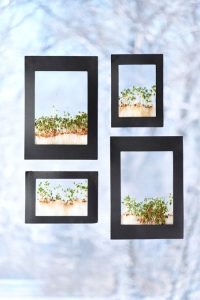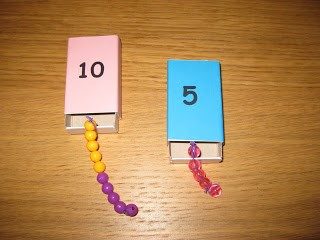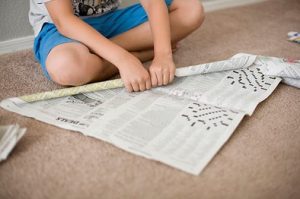Go Fish!
Go Fish is a pair-seeking game.
Players each have their own hand of 5 cards.
- Players ask their opponents for a card that pairs with a card in their own hand.
- Basic play begins with making matched pairs.
- For example, if you have a card with five dots you would ask you opponent for another card with five on it.
- If your opponent has the card, they give it to you, and then you keep asking for cards until your opponent does not have the card you request and says, “Go Fish!”
- You get to pick from the pile of face-down cards in the “fishpond.”
- If you make a match you continue.
- If not, it is the other player’s turn.
- The game continues until all the cards are paired up.
- Players count their pairs, and the player with the most pairs, wins the game.
Match ‘Em/Memory
Match ‘Em or Memory are similar pair-seeking games that allow you to adjust the memory challenge. In both games, cards are arranged in an orderly array on the floor or a table.
In Match ‘Em, the cards are face up; in Memory, the card are face down.
Players take turns finding pairs.
The game is over when all the pairs are matched.
Capture
Capture is a comparison game also known by the traditional name of “War.”
To play, deal the entire deck of cards among the players.
Players show their cards at the same time, and the person with the greatest number wins the round and takes the cards.
When the cards run out, the game is done, and players can count their cards to see who has the most cards.
Things to Consider
While all these games can be played with a standard deck of cards, you will want to give some thought to how you create a deck to match your child’s math skills. Some things to consider:
- Use quantity cards that show a pictorial representation of a number. This helps children develop their visual number sense as well as their computational fluency.
- Start with cards 0-5 for preschoolers; 0-10 for kindergarten
- The size of the deck (number of cards in play) should be appropriate for children’s age and experience. Small hands can only hold a small hand of cards!
- Use small arrays of cards to play Memory at the start such as a 3 x 4 array of 12 cards. Arrange cards face-up or face-down to vary the memory challenge based on children’s age, experience playing, and the math skill they are working on. If it is a new concept, even for older children, face-up may be the way to play the first few times.
- Fewer cards in the deck means faster games that keep children’s attention. When games are quick, they can be played again and again, which eases the disappointment of losing.
 Material
Material Goal
Goal Preparation
Preparation How do you do it?
How do you do it?






